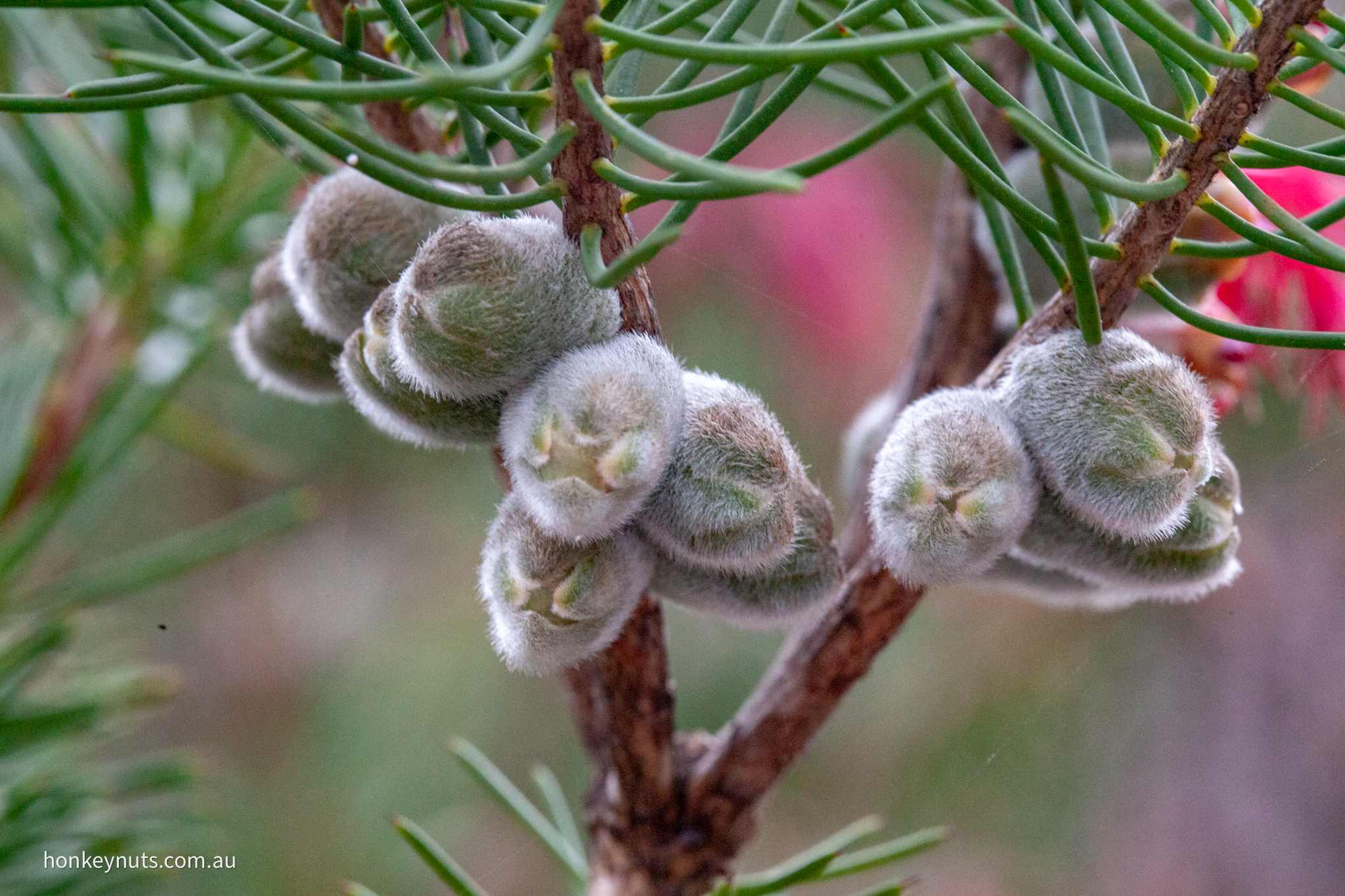Mouse-ears is usually a dense, spreading shrub 2-4 m tall, but it can grow more erect. It grows in granite soils in the Darling Range. Calothamnus species are known as “one-sided bottlebrushes” although the flowers of mouse-ears resemble toothbrushes more than bottlebrushes. They occur from mid-winter to late spring. With a covering of short, silver hairs, the fruit have a mouse-like appearance, and two of the four lobes at the end of the fruit are turned back like the ears of a mouse, giving the common name. The species name comes from rupes “rock” in Latin, referring to it’s rocky habitat.
Ref: “Leaf and branch: trees and tall shrubs of Perth” by Robert Powell. Published by the Western Australian Department of Environment and Conservation, 2009.

